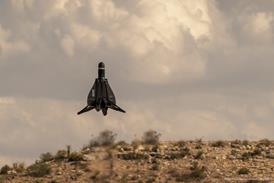In the past two years the Maltese market has boomed, fuelled by a resurgent Air Malta and the arrival of low-cost carriers
Often overshadowed by faster growing and larger Mediterranean hotspots like Greece, Turkey and Spain, the tiny islands of Malta seem to be holding their own as a tourist destination by boosting their popularity through short-break holidays. "This market is growing much faster than summer holidays and it's all year round," says Brock Friesen, Air Malta's chief commercial officer, who joined from the Star Alliance in mid-2006 to lead the airline's commercial revival.
In addition to Air Malta, low-cost carriers like Ryanair and network players like British Airways and Lufthansa have also been targeting the market for travellers seeking two to five day breaks. Ryanair and others began eyeing Malta as a destination in 2005 encouraged by a hotel industry that was keen to stimulate the island's flagging tourist industry.
 |
|---|
© Malta Tourist Board |
"The Maltese Government decided to introduce competition to the market, it has been extremely supportive," says Howard Millar, deputy chief executive of Ryanair. Prior to 2006, the island's popularity had waned. "Malta was off the map," he says. Growth was stagnant, the airport was expensive and the island was suffering.
Assisted by an airport incentive scheme, Ryanair was the first low-cost player to operate to Malta in late 2006. As the table shows, Ryanair in particular has had a big impact in the past three years, going from zero to a capacity share of nearly 21%. It now serves nine routes from Malta International Airport. "It is a classic instance of low-cost carriers stimulating a market," says Millar, and they now make up a third of the island's air travel market.
The low-cost influx has represented a major challenge for Air Malta, which had suffered losses in the five years to 2006 but had undertaken a company-wide cost-cutting project since 2001. "When I arrived in 2006 I saw that traffic had not grown since 2001. There was not one iota of growth either in winter or summer," says Friesen.
He spent the first six months on a plan to restore Air Malta's fortunes. The essence was to "systematically target the short-break market. This needs frequency, good lead-in fares and to get into people's faces such as advertising on the Paris or London metros", says Friesen.
Although carefully researched, the move was a big risk for a carrier that had traditionally focused on selling to the traditional packaged two-week summer holiday market. "The concept is to try and extend the vision of summer," says Friesen. "There was a lot of convincing to do here. The carrier was over-dependent on tour operators and had done the same things for 30 years."
New Target Market
The research showed that Malta was two hours from many rich urban populations in Europe, with only the large market of London further away at three hours. This is an ideal range for those wanting short-haul breaks and an economic distance to fly with low fares and high oil prices.
 |
|---|
"The carrier was over-dependent on tour operators and had done the same things for 30 years"Brock Friesen |
For winter 2007-8 the carrier saw its traffic grow by 15%, the first rise in seven years, with revenue up by 8%, says Friesen, in what used to be a "dead period". Overall it carried 540,000 passengers. From April to June the climb continued with traffic up by 17% and revenue by 6%. The slower revenue growth resulted from weakness in the British pound against the euro. Overall its success has been "completely driven by the short-break market".
"Growth in first half revenue in 2008 was the highest in memory and it came at a time when Air Malta faced its fiercest competition ever," says Friesen. The carrier's full financial results will be available shortly, but for the year to March 2008 Air Malta's revenues rose by 6% to $430 million.
The carrier says that if it hadn't been for the spike in fuel costs the traffic boost could have seen Air Malta return to profit this year. "The increase in fuel in the first quarter wiped out any chance of profitability," says Friesen. However, he is forecasting double-digit traffic growth again this winter and the airline's cost base has fallen to enable it to be "something along the lines of an easyJet". "All of our traffic - around 90% - is point-to-point so we have to get our cost structure in line with easyJet and Ryanair," says Friesen.
To see our videos of chief executives giving their views on industry fortunes at the IATA AGM visit: flightglobal.com/iata
Source: Airline Business























